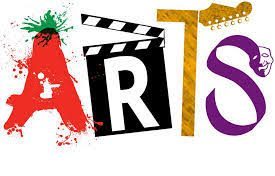Hearing the word microteaching opened a lot of nervous energy at first but once I started working on it, it let me be a critical, creative thinker to develop a lesson plan. Plus getting to use collaborative skills with my team enabled me to not only develop a lesson but develop myself. Microteaching is a key aspect of being able to gain confidence which is vital in teaching children drama.
‘achieve an understanding of the inherent principles that inform their best practice and, through self and peer analysis, discover how to extend their own abilities.’ (Bloomfield, 2000)
Teaching drama is something I have never considered or experienced before. We had partaken in these as students but this time we had to use our teacher knowledge to convey them to the “children.”

Choosing a storybook, we identified with teacher in role, thought tunnel and monologue. We used these to enable the children to connect with the book and explore their own feelings in these situations of the difficult themes within. We also felt that the children would connect with the idea of animals and them having a party in the jungle.
It was important to use our skills and choices to engage the children in the drama. While linking into the e’s and o’s that lead our teaching practice. Identifying this area of them in relation to this particular drama lesson.
Exploring real and imaginary situations helps learners to understand and share their world.
- I can respond to the experience of drama by discussing my thoughts and feelings. I can give and accept constructive comment on my own and others’ work.
EXA 0-15a / EXA 1-15a / EXA 2-15a / EXA 3-15a
(Scottish Government, 2017)
This identified to me the way children can use this storybook to learn about the world. We connected to the way the pupils can use it to explore themes of bullying and inclusion. Being able to convey their thoughts and feelings surrounding these situations, which can be real life for some.
In the second part exploring, even more, the way a book can be used to help a child process and create emotional and deep pieces. As it was identified to us, using a mime with no words but adding sound on top can be powerful. Using a story with a forest, we created trees and made the sounds of going through a wood. The silence and darkness, adding in different noises, created a power of silence and connecting with the feelings of the girl in the story, with the fear she might have felt, just like when I heard the word ‘microteaching.’
With visual arts, I didn’t experience the practical due to having to leave campus. However, I discussed with my peers the activities which took place. They explained to me the process of adding lyrics to our images, we painted the previous week. This can be very emotive and brings more out of the picture than the colours and what you see first-hand. Connecting words to our creations can add a deeper level to a personal piece of work. This leads on from the work of last week with words leading to the creation of a painting, to add words on top of the same drawing.
“…learners the chance to interpret, communicate and create meaning for themselves.” (Grainger, 2003, pp. 44)

Being able to express themselves through the arts and the images they have created but connecting words to our creations can add a deeper level to a personal piece of work.
Looking at these two areas I can see the way images and words put together, can create a strong, powerful and creative piece. The words in a storybook can lead to children to open up their own perspectives to the words they hear. As much as viewing an image can lead to the words, we link with them, on top of the picture. Both can create deeper, powerful meanings to these art forms, and also enable a child to express themselves in different but similar manners. Words can express feelings, however mixing them with images, movements or sounds a wider sense of emotions can occur. Seeing the way our curriculum links up is clearly identified in arts this week, with words being central in our art creations.
References
Bloomfield, A., Childs, J. (2000) Teaching integrated arts in the primary school. Routledge: New York
Teresa Grainger (2003) Creative teachers and the language arts: Possibilities and potential, Education 3-13: International Journal of Primary, Elementary and Early Years Education, 31:1, 43-47
Scottish Government (2017) Curriculum for excellence: expressive arts. Experiences and Outcomes[Online] available: https://education.gov.scot/Documents/expressive-arts-eo.pdf [accessed: 10/10/2019]


